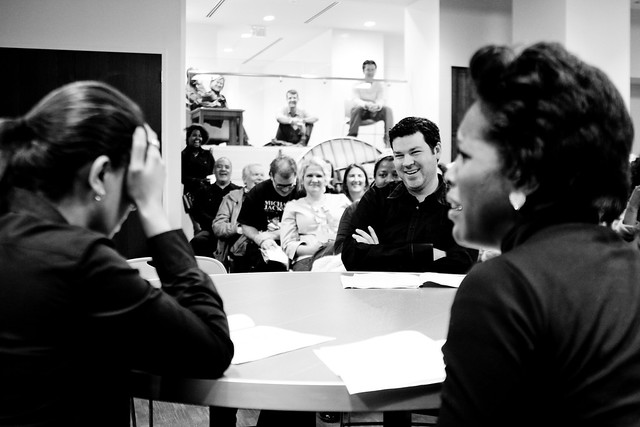The Public Relations Society of America defines public relations thusly:
“Public relations helps an organization and its publics adapt mutually to each other.”
Which is just an awful definition, reeking of the stale conference room and whiteboards crowded with b-school jargon. Merriam-Webster has a slightly better explanation:
the business of inducing the public to have understanding for and goodwill toward a person, firm, or institution
PR is about getting the word out about your product, cause or service. I’d consider myself a semi-professional PR practitioner, busy trying to “induce” the public to do something increasingly unknown in 21st century America: read a book. And not just any book. My book, fiction, of all things, by an unknown author.
So, I’m always interested in new ways of “inducing” (why not just say “persuading”?) the public. I attended a session on movie marketing put on by the DC Film Salon. A pair of PR stars gave a presentation on how they got the word out about indie films, including some creative tactics like having screenings for “tastemakers.”
But the room was filled with cash-poor independent filmmakers. How could they afford these PR services? And, moreover, would this be a good use of their limited funds? I asked if there was any way to connect the parties and screenings to the most important metric of all – ticket sales. But there’s no way to accurately measure the impact of PR.
Which is what inspired me to write How Do You Measure PR? It’s on the blog FlackRabbit, published by my friend Margie Newman, who is perhaps the smartest PR person I know. We’ll see what answers her readers come up with.


